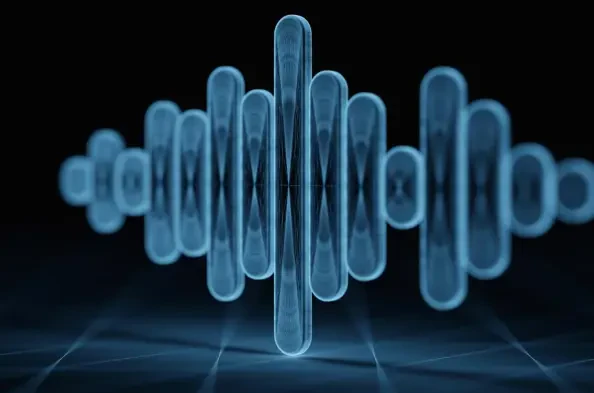In recent years, advanced technologies like TDK Electronics’ Acoustic Data Link (ADL) have demonstrated transformative potential for industrial communication. The challenge of transmitting data through metallic enclosures, which traditionally obstruct electromagnetic signals, is being overcome. ADL represents a breakthrough in industries as diverse as healthcare, defense, chemicals, and biotechnology. This innovation enables communication within metallic environments, such as Faraday cages, by converting electrical signals into acoustic waves. With the ability to facilitate wireless data and power transfer where electromagnetic transmission methods falter, ADL is reshaping industrial processes. The underlying technology uses piezo transducers, offering solutions for many applications, including predictive maintenance, performance enhancement, and safety improvements. The implications are profound, promising to redefine operational efficiency while broadening data transmission possibilities, including energy conversion and obstacle detection. Such versatility makes ADL indispensable for sectors requiring reliable communication in isolated settings, ensuring greater effectiveness and ingenuity in addressing industrial challenges.
Overcoming Barriers with Acoustic Technology
The reliance on metallic enclosures in various industrial settings presents a well-documented challenge for data transmission. Traditional methods often fail to penetrate these barriers, limiting communication and data flow within critical environments. Acoustic Data Link technology offers a compelling solution, bypassing these constraints through sound-based data transmission. Unlike electromagnetic waves, acoustic waves can traverse metal without difficulty, opening paths for communication in sealed structures. With industries increasingly employing pipe-in-pipe configurations or sealed enclosures, the ability of ADL to integrate sensors for monitoring crucial parameters—such as temperature, pressure, and humidity—is becoming vital. The technology’s support for multiple sensors introduces a robust layer of monitoring and control, essential for process optimization and predictive maintenance. ADL not only improves safety by identifying potential anomalies but also reduces downtime, ensuring the seamless operation of industrial equipment. By transcending the limitations of electromagnetic transmissions, ADL sets the stage for a new era of industrial communication, unlocking untapped capabilities and enhancing operational precision.
Diverse Applications of Acoustic Data Links
TDK’s ADL is not confined to mere data transmission; its potential extends far into other technological arenas, demonstrating remarkable adaptability and broad-spectrum applicability. It supports data transfer rates that reach up to megabits per second, ensuring rapid communication that meets modern industrial demands. Beyond its capacity for data transmission, ADL delves into power transfer, facilitating energy flow up to 100 mW in challenging environments. This level of power transfer is especially beneficial for remote monitoring systems where accessibility is limited. Industries dealing with complex chemical processes or high-security military applications can significantly benefit from its attributes, as embedded sensors in secure metallic areas enhance process transparency and control. The breadth of ADL’s applications includes advanced fields such as energy conversion systems, where it aids efficient power management, obstacle detection in autonomous navigation, and providing haptic feedback within touchscreen technology. These diverse functionalities reveal ADL’s role in pioneering advancements, fostering innovative solutions across multiple sectors and challenging traditional communication paradigms.
Future Implications and Industry Impact
Advanced technologies like TDK Electronics’ Acoustic Data Link (ADL) are revolutionizing industrial communication. Traditionally, metallic enclosures hinder electromagnetic transmissions, but ADL is overcoming this barrier. This technology brings significant advancements in sectors such as healthcare, defense, chemicals, and biotechnology by allowing communication within metallic settings like Faraday cages. ADL achieves this by converting electrical signals into acoustic waves, enabling wireless transfer of data and power where electromagnetic methods fail. By employing piezo transducers, ADL addresses diverse applications such as predictive maintenance, boosting performance, and enhancing safety. Its impact is substantial, promising a new era of operational efficiency and expanded data transmission capabilities, including energy conversion and obstacle detection. With this versatility, ADL becomes essential for industries needing steadfast communication in isolated environments, ensuring greater effectiveness and creativity in tackling industrial challenges. Its innovative approach is setting the stage for a dynamic shift in industrial processes.






